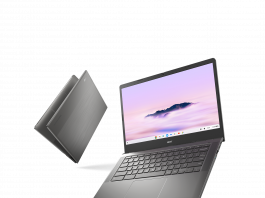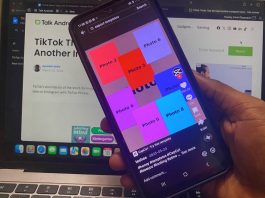1. Notion




It’s hard to explain exactly what Notion is in a few sentences, but the best way to describe it would be as a digital notebook on steroids. You can do the basic things you’d expect from a modern notebook app, like writing text and making lists, but you can also add links and media to the pages you create. That’s not all though.
Notion is fantastic software for collaborating with people, so not only do you have to make private pages, but you can share pages with other people when you’re collaborating on projects for work or school. You can even put pages within other pages. Using it for the first time, I realized it had enough formatting options to rival many website builders. It’s like the ultimate notebook app, though all that complexity can take a little time to get the hang of.
2. Slack




Slack has found itself as the top option for instant messaging and communication within an organization. First off, you can have different workspaces for all the organizations you’re a part of (yes, I only use Slack for one organization at the moment), and each workspace can have different channels for specific topics like news, content ideas, general conversations, and whatever the channel admin deems necessary.
It’s a better option for communication than email, and with cloud storage apps and in-built file sharing, it makes your workflow a lot smoother. Think of Discord but for business. Using Slack has made working on Talk Android a lot easier than other places I’ve been at (no, honestly).
3. Google Keep




Google Keep is an app that I use a lot because it is the notes app that falls in the Google ecosystem. This means that notes taken on your Android phone can be viewed or edited on any other device signed into your Google account and vice versa.
The app is like a minimalist version of Notion, which makes it easier to get the hang of. You can write notes, make to-do lists, draw, and make voice recordings. You can also customize the notes you take with different backgrounds, images, voice recordings, and formatted text.
4. Google Docs




Everyone knows Google Docs (I hope), as it is one of the simplest word-processing applications to use. Its closest competitor is Microsoft Word, and while I prefer that for many reasons, there are many aspects where Docs simply has Microsoft beat.
First off, Google Docs is part of the Google ecosystem, so whether you’re using a tablet, phone, or even your computer, you’ll be able to work on whatever documents your Google account has access to. The biggest advantage is the collaborative nature. You can share documents with others very easily and allow them to view, comment, or even edit them.
5. Trello




Trello is a very interesting type of productivity app, especially with the unique bulletin board style it uses. Have you ever seen how some tech startups use sticky notes on a board to determine what needs to be done and what has been done already? Trello is a digital version of that.
Trello uses Boards, which refer to major tasks or aspects of a workflow; for instance: Proofreading could be one, and Publishing could be another. Cards are what we place on these boards. If I finish an article, I can paste it to the Proofreading board so the team member in charge of that can do so and move it to the next board in line. It’s perfect for collaborating with a team, but Trello can also be useful when trying to organize your own tasks.
6. Todoist






While other apps on this list have to-do lists, like Notion and Google Keep, they’re to-do lists in the most basic form. If you’re someone who heavily relies on these to get through your days, then Todoist is a power user’s to-do list.
You can set up your to-do list for today and dates to come, along with priority levels and reminders for each one. Some tasks are a bit more complex than others though, so they’ll require multiple steps, and that’s why the app also supports writing in subtasks. You can even make shared to-do lists, perfect for group projects, as well as check your productivity level for the day from the profile page.
7. Google Calendar






There’s not an Android phone out there that doesn’t come with a calendar app out of the box (at least I don’t think so). For my Samsung Galaxy device, the Korean company pre-installed their first-party option, which is great and all, especially since it can integrate with my Google account. However, I always think that if there’s a Google option for your Android phone, you’ll get the best integration by sticking to the ecosystem.
Google Calendar does what you expect. It shows you the dates and you can set multiple events and times for each date. But you can also color code events on your calendar that are for work, family, school, etc. Things like dinners and birthdays even get cute graphics. Your calendar can be shared with others, like colleagues and family members, so that when you create events related to them, it updates everyone’s calendar. You can even put links to group video or voice calls when needed! It’s perhaps the most robust calendar app.
8. Forest




I’m not a fan of everything being gamified, but in some cases, it’s hard to argue that it compels more beneficial behavior. For instance, Forest is intended to keep you focused on the work you’re meant to be doing and not all the other distractions that you might find on your Android device. Sure, Android phones have a Focus Mode built-in, but what stops you from just closing it and opening Candy Crush?
Forest is extremely easy to understand. When you want to focus, you plant a tree and set a timer for how long you plan to work. When you meet the time you set, you would have grown a full tree! Each time you use the app successfully in this manner, you add another tree to your forest (hence, the name). It actually works better for me than the built-in Focus Mode because of this system.
9. Loom




If you’ve ever started work at a new job, particularly one where you’re working remotely, someone might have had to show you the ropes regarding the workflow with some app or software platform. The easiest way to do this is through a screen recording, and Loom might be the easiest way to get this done.
You’ll be able to record your screen and/or camera, share the video right away, and even allow people to comment and ask questions under the video itself. Using Loom can save you a lot of time because instead of needing to type a lengthy and detailed walkthrough, you can just show someone what to do.
10. Google Drive




If your company isn’t large enough to have some kind of secure internal storage network, then Google Drive is the easy alternative by a mile. It is cloud storage, so you can access it from anywhere in the world, plus you get 15GB of storage for free. It’s the easiest way to share files with anyone from your Android phone, especially as it comes pre-installed on many of them.
It’s also great since it can be used to collaborate. You can have a shared drive with your team members, and files that they share with you can be viewed easily through the Shared tab. It natively supports over 100 file types according to Google, plus, it now comes with a built-in document scanner, so yeah, it is hard to find a cloud storage application that beats Google’s homegrown entry.



